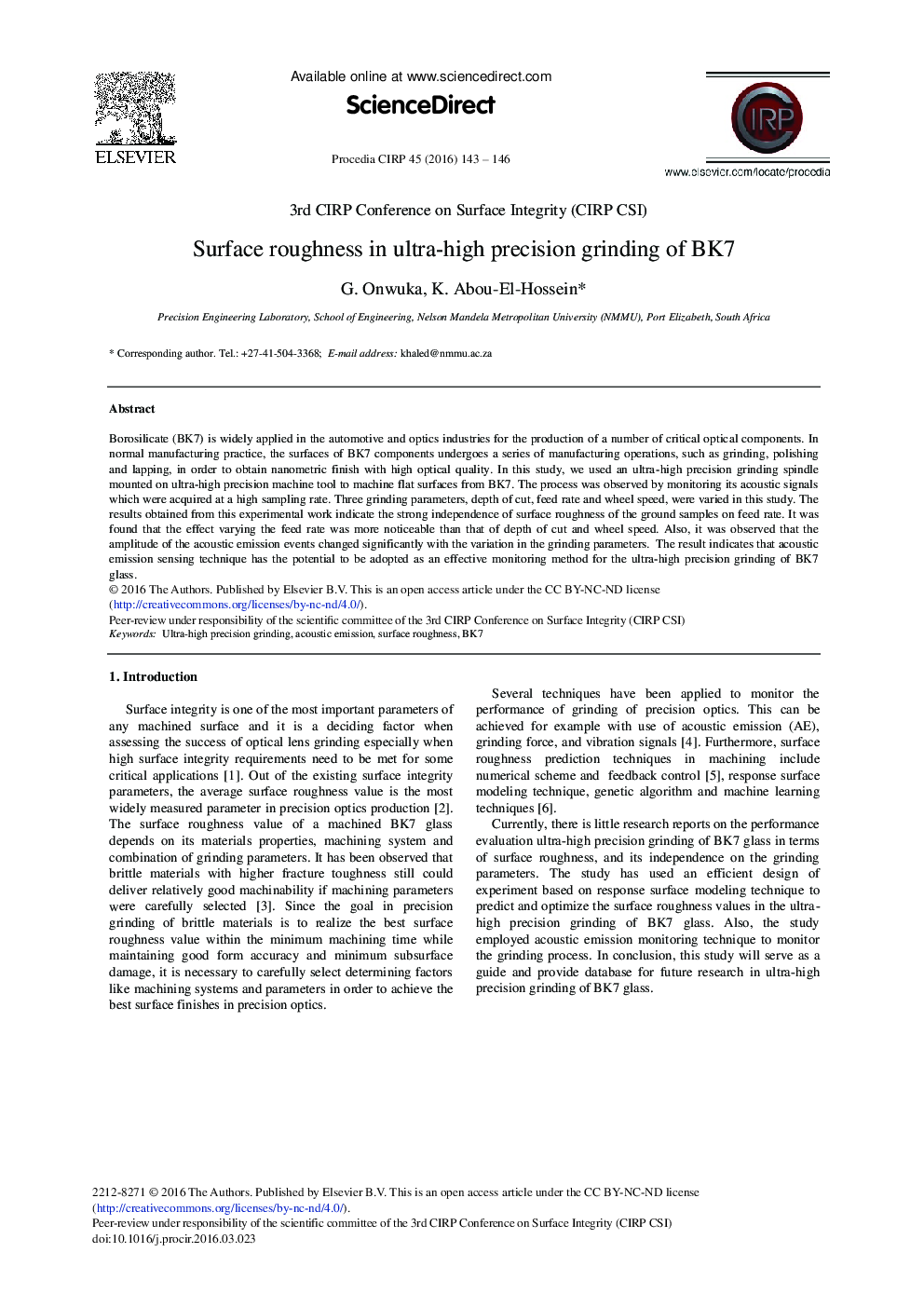| Article ID | Journal | Published Year | Pages | File Type |
|---|---|---|---|---|
| 1698496 | Procedia CIRP | 2016 | 4 Pages |
Borosilicate (BK7) is widely applied in the automotive and optics industries for the production of a number of critical optical components. In normal manufacturing practice, the surfaces of BK7 components undergoes a series of manufacturing operations, such as grinding, polishing and lapping, in order to obtain nanometric finish with high optical quality. In this study, we used an ultra-high precision grinding spindle mounted on ultra-high precision machine tool to machine flat surfaces from BK7. The process was observed by monitoring its acoustic signals which were acquired at a high sampling rate. Three grinding parameters, depth of cut, feed rate and wheel speed, were varied in this study. The results obtained from this experimental work indicate the strong independence of surface roughness of the ground samples on feed rate. It was found that the effect varying the feed rate was more noticeable than that of depth of cut and wheel speed. Also, it was observed that the amplitude of the acoustic emission events changed significantly with the variation in the grinding parameters. The result indicates that acoustic emission sensing technique has the potential to be adopted as an effective monitoring method for the ultra-high precision grinding of BK7 glass.
